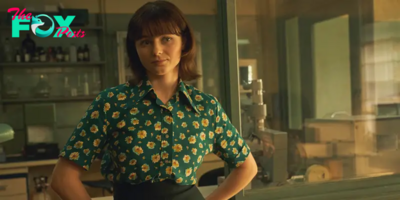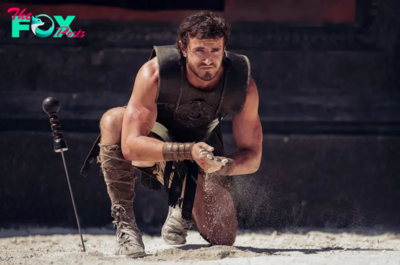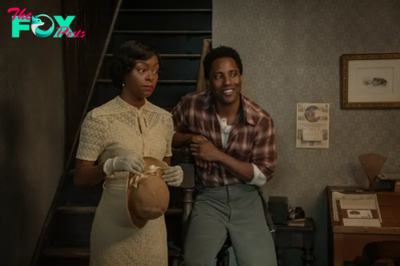Entertainment
The Real Reasons Inside Out 2 Was a Hit—And What It Means for Pixar’s Future
Movie theater owners can take a cue from Riley, the protagonist of Inside Out 2, and quell their anxiety. The Pixar film massively outperformed expectations at the box office and scored the biggest opening of the year so far with $155 million domestically and $140 million overseas, outpacing earlier 2024 blockbusters like Dune: Part 2. Industry prognosticators, still reeling from the historically bad Memorial Day Weekend box office, expected the animated movie to make just $80 million its opening weekend.
The movie’s success is great news for Pixar and Hollywood. Pixar has been suffering a creative and commercial slump the past few years. And just one year after the Barbenheimer phenomenon, the 2024 box office has been off to a grim start, with high hopes dashed (see: The Fall Guy, Furiosa) and too much pressure placed on individual titles, like the recent Bad Boys sequel, to save the entire season. Had Inside Out 2 failed—a determination increasingly made as quickly as opening weekend comes and goes—Pixar's Chief Creative Officer Pete Docter recently admitted to TIME that the studio would have to "radically" rethink its Business model.
"I can't imagine having a better chance at a big box office than this because it's a known movie and characters that meant something to people and a really funny cast—and hopefully something meaty at the heart of it that you can take home as well," he said in an interview. "So if this doesn't do well at the theater, I think it just means we're going to have to think even more radically about how we run our Business."
Pixar plans to keep the movie in theaters for 100 days, a long runway that will help boost its numbers and combat the notion that families can wait just a couple weeks for a big budget film to land on streaming (see, again, The Fall Guy). It won't face serious competition until Despicable Me 4 debuts July 3, and the pickings for family movies remain slim after that with Moana 2 and Paddington 3 not premiering until November.
Here are the key reasons why Inside Out 2 had such an unexpectedly strong opening weekend—and why the the success of the movie bodes well for Pixar's new strategy.
Hollywood isn't making enough family movies
Just as last year's biggest blockbuster, Barbie, catered to an underserved audience—women—Inside Out 2 offers Entertainment for another overlooked sector: kids.
Pundits have made much of the fact that during the pandemic Disney premiered Pixar's films directly on their streaming service, Disney+, acclimating families to watching high quality animated films at home. And while there's certainly some truth to that—and families are perhaps less likely to venture out to the movie theater than they were pre-pandemic—that doesn't mean parents have shunned the cinema entirely.
Read more: The Best Shows to Watch on Disney+
The few PG-rated movies released this year have performed decently at the box office: Kung Fu Panda 4 topped $500 million. And even The Garfield Movie, which earned a measly 36% on Rotten Tomatoes, almost beat its much more hyped box office competition Furiosa over Memorial Day Weekend. And in 2023, Super Mario Bros. ranked only behind Barbie on the list of the highest-grossing movies of the year. Inside Out 2, which boasts a solid 91% on Rotten Tomatoes, is evidence that parents were thirsting for family-friendly content in movie theaters and jumped at the chance to bring their children to a quality animated film.
Inside Out 2, in particular, had broad appeal across age demographics. Riley, the hero of the first film, turns into a teen and copes with emotions like anxiety and embarrassment. The movie speaks to some rather grown-up themes and no doubt attracted moviegoers beyond their teen years themselves. The top age demo for Inside Out 2's opening weekend was those under 12 (23%). But 19% of the audience was aged 25 to 34, and 18% of the audience was aged 18 to 24. Some of those attendees were parents bringing their kids, but a number were surely childless adults.
I recently put the question of why there are so few films aimed at kids at the box office to Pixar's Chief Creative Officer Pete Docter. His straightforward answer: Good animated movies are expensive to make.
"So far Pixar has built a Business around pretty large budgets," he said. Inside Out 2 was reported to have around a $200 million budget—more than that of, say, action-adventure epic Furiosa, which reportedly cost $168 million to produce.
"It allows us to make a lot of mistakes and take risks, and if it doesn’t work, we can still go back and fix it," Docter added. "I think if you really want to make it cheap, you think of an idea, and you make it. But if you want to make it good, you have to change and iterate a ton and that's what we've been able to do so far. If the box office doesn't support that, if the economics don't support that, we just have to make even more giant shifts."
Animated sequels work better than live-action ones
Why is Inside Out 2 drawing so many moviegoers to theaters when its predecessor premiered almost a decade ago? Haven't the kids who watched the first Inside Out grown out of animated films—or at least forgotten what happened in the original movie? Inside Out 2's box office success is, theoretically, more confounding given that Furiosa recently bombed at the box office. Wouldn't that be the perfect example of a prequel that waited too long (nine years) to find its way to theaters?
There are plenty of reasons Furiosa underperformed at the box office, including the fact that prequels tend not to do as well as sequels, and the titular role had been recast with a new actor. But animation also side-steps many of the problems presented by live-action films. Sure, computer graphics and animation styles evolve over time. The original Toy Story doesn't look as sleek as its sequels. But the characters and stories themselves can remain largely untouched by time. The director doesn't have to recast his main character, as George Miller did for Furiosa. Tom Hanks can voice Woody through the decades. And while a toddler might be able to distinguish between a Sesame Street episode shot in the 1970s vs. the 2020s, Disney classics like Cinderella or The Lion King remain largely preserved in amber on Disney+.
Pixar has proven the longevity of its properties in the past: Multiple generations of children have now grown up with the Toy Story characters, even more so since the advent of Disney+. Having been the target age at the time of theatrical release has become less and less relevant. If anything, each successive sequel has expanded the franchise's audience: The Millennials who watched the original Toy Story as children cathartically wept when Andy headed off to college around the same time that they were were leaving home and abandoning their own toys. Meanwhile, a five-year-old could enjoy the daring adventure without older audience members' emotional baggage.
Anxiety is having a moment
If you’ve read the news in the past decade or so, you’re probably aware that the kids are not alright. There’s an anxiety epidemic among teens right now, in part because of the rise of social media. And while Inside Out 2 doesn’t address the crushing pressures crated by Instagram and TikTok (the script smartly dispatches with Riley’s phone early in the film), it does anthropomorphize the common experience of an anxiety attack, a scene that no doubt resonated with kids and adults, alike. The first movie helped kids discuss how to manage common emotions like anger and sadness with their kids. The feeling of anxiety is, perhaps, even more abstract, and the film will help jumpstart a dialogue between children and their parents.
Whether (the characters of) Joy or Anxiety was more responsible for driving people to movie theaters we may never know. But certainly reminders of the famous voice actors behind those two emotions—Amy Poehler and Maya Hawke, respectively—along with a viral video of It Girl Ayo Edebiri, recording her voice over as Envy helped coax fans of these various comedians into buying tickets. It's hard to build a viral TikTok marketing campaign like the #GentleMinions trend of 2022 that helped make Minions: The Rise of Gru a hit. But capitalizing on a star like Edebiri just as her beloved show The Bear returns to TV cannot hurt.
Pixar plots its future
For better or worse, Pixar is going to be making more sequels in the years to come. As Docter explained to TIME, the studio has recently focused on stories derived from specific experiences in directors' childhoods, like Luca and Turning Red. Now, the studio is on the hunt for more universal themes: Almost every kid thinks their toys came to life or that there was a monster hiding in their closet and can relate to movies like Toy Story and Monsters Inc.
Those original yet ubiquitous notions are harder to come by after 28 feature films. That doesn't mean Pixar is abandoning original ideas. It will release Elio, a movie about a little boy mistaken for Earth's ambassador in space, next year. And Pixar's braintrust—the group of creatives who discuss, approve, and collaborate on all of the studio's films—are working on new stories.
But Pixar has also confirmed that Toy Story 5 is coming in 2026. Sequels, after all, have some built-in draw for audiences. "It’s hard. Everybody says, 'Why don't they do more original stuff?'" Docter said. "And then when we do, people don't see it because they're not familiar with it. With sequels, people think, 'Oh, I've seen that. I know that I like it.' Sequels are very valuable that way."
-

 Entertainment1h ago
Entertainment1h agoMethods to Recharge as an Actor
-
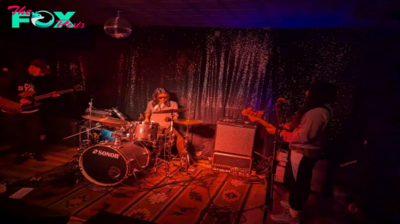
 Entertainment1h ago
Entertainment1h agoWeak Sign: October 4, 2024 Tubby’s
-
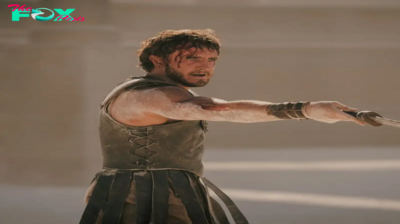
 Entertainment1h ago
Entertainment1h ago‘Gladiator II’ Ending Breakdown: Did Lucius Realise Maximus’ Dream of Rome?
-
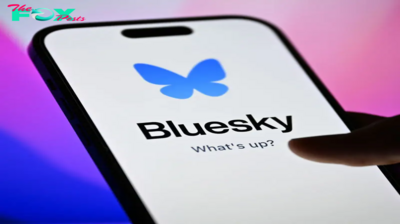
 Entertainment6h ago
Entertainment6h agoGet to Know Bluesky, the New X Alternative with 18 Million Active Users
-

 Entertainment8h ago
Entertainment8h agoBardavon Announces New Executive Director
-
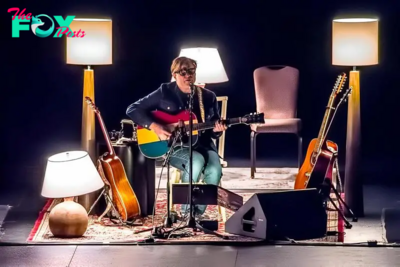
 Entertainment11h ago
Entertainment11h agoPHOTO GALLERY: Ryan Adams – OLG Stage at Fallsview On line casino – Niagara Falls, Ontario – November 24, 2024
-

 Entertainment14h ago
Entertainment14h agoDonna Kelce’s ‘Holiday Touchdown’ Cameo Includes Sweet Easter Egg to Son Travis: ‘Love You Mommy’
-

 Entertainment17h ago
Entertainment17h agoAmerica On CoffeeWe’re simply inviting you to take a timeout into the rhythmic ambiance of our breakfast, brunch and/or espresso alternatives. We’re comfortable everytime you cease by.Shoe Shoe Shine – The Dynamic Superiors
